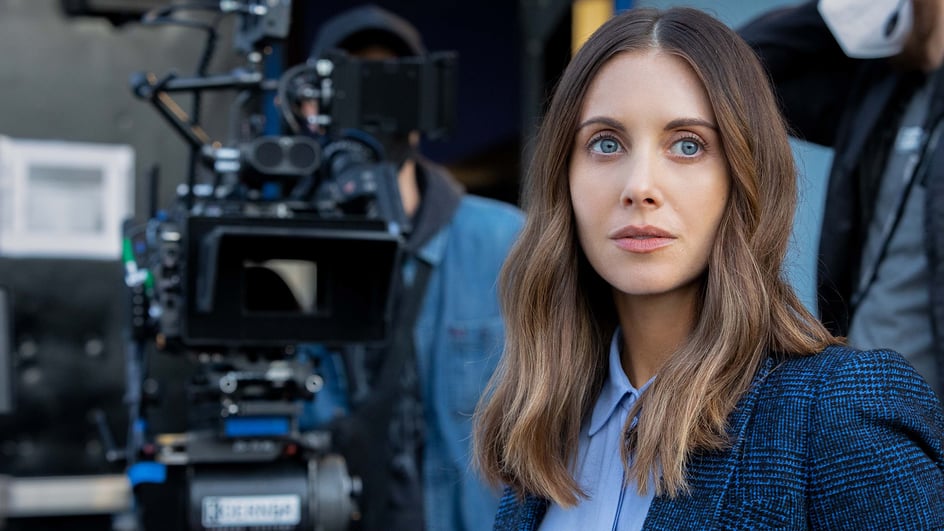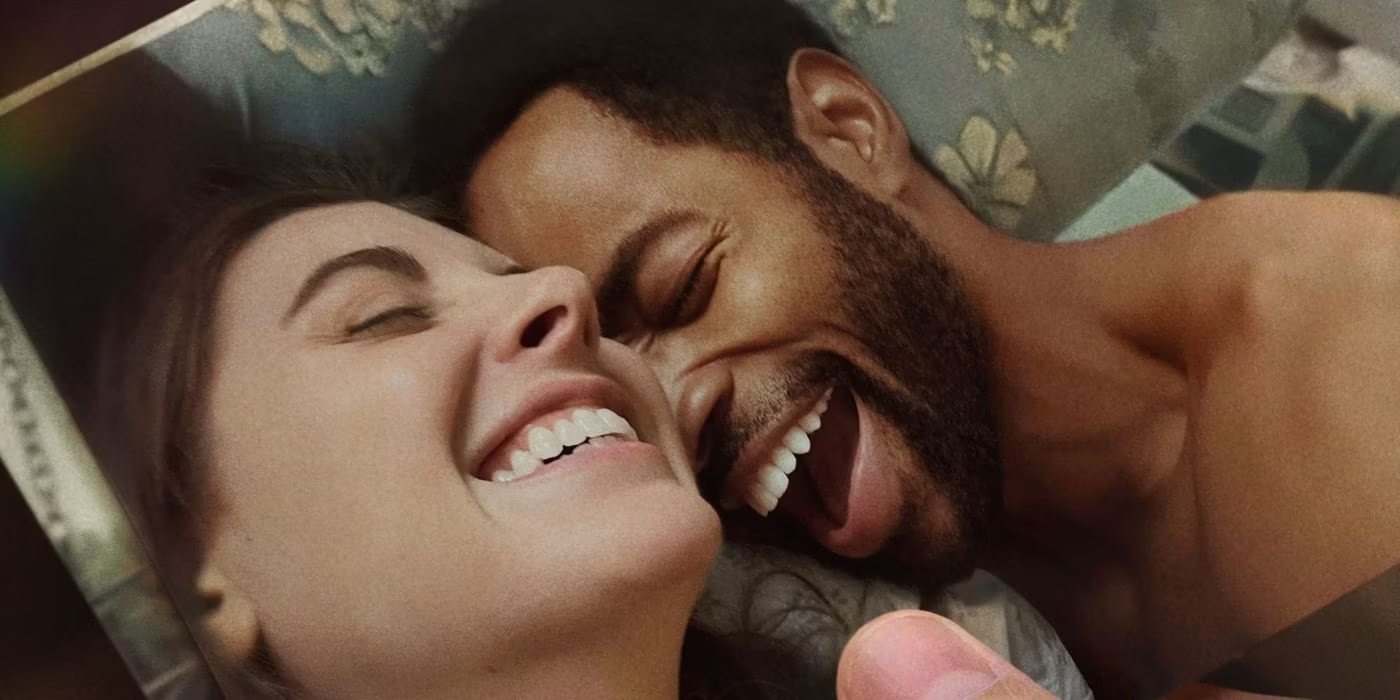Remote Workflow Insights with ‘Somebody I Used to Know’ Editor Ernie Gilbert
Jourdan Aldredge
Jourdan Aldredge

Mar 2, 2023
While directors and cinematographers might get all the glamor (and nice Instagram profile pics from being on set), there is truly no job in filmmaking more challenging — or satisfying — than that of the editor.
There’s so much power to the role, and so much responsibility to bring a filmmaker’s vision to life. And that’s especially true when the filmmaker is a relative new-comer to directing, which is the case with Dave Franco’s Somebody I Used to Know.
Co-written by his partner, and the film’s star, Alison Brie, Franco and Brie have plenty of in-front of the camera experience at their disposal. However to really make their star-studded ensemble rom-com come to life, they needed some extra care behind the scenes in the edit.
We chatted with seasoned film and television editor Ernie Gilbert — who’s best known for his time cutting episodic shows like Atlanta and Barry, and music videos like Childish Gambino’s "This is America" — about his guiding process and how they were able to use remote editing technology to bring this budding rom-com to life.
Soundstripe: Tell us a little bit about how you got into film and video, and what drew you specifically to editing?

Ernie Gilbert: Music was my way in. I started working with bands creating behind-the-scenes videos, and filming live concerts in college. As a freshman, I directed a music video for my own band, the first music video I ever did. When I dug into the edit, I realized we could use a match cut to have a character run in one door and then out another, a fluid singular motion. It was simple, but it felt like magic. I've been chasing that feeling ever since. Music videos and documentaries gave me a solid base to learn the craft with a significant focus on the rhythm of a cut. I carry this sensibility with me now, even in dramatic narrative work.
Soundstripe: You've worked on a variety of project types ranging from narrative features to episodic shows to music videos. What approaches do you bring for all projects no matter what and what techniques do you use just for narrative features?
Ernie Gilbert: My biggest tip for all kinds of projects is organization. As an editor, you become the librarian for hours upon hours of footage. I like to watch every take and find moments that force an emotional reaction from me. I drop markers on shots, camera moves, and bits of performance to reference throughout the edit. Then when I'm stuck, I have a base to lean on of great alternatives to try.
It also helps when talking with my directors and producers. By being organized, it's just as fast to try something new than to debate whether it will work. A lot of the time, those detours will illuminate a new way into the material. But you can only do this when you know the footage. Your creative collaborators will appreciate your flexibility and speed. The hardest thing about narrative features compared to short-form content is the amount of time it takes to try things and review them.
For a 3-minute music video, I can tweak an edit and then review the cut multiple times on the same day. For a feature that runs around 2 hours, a simple watch down becomes a big part of your day. You have to be disciplined and constantly balance shifting from the micro view of an individual moment back to the 35 thousand feet view of the whole project. It's a different muscle and comes from practice and trying things.
Soundstripe: How did you connect with Dave Franco and Alison Brie for Somebody I Used to Know, what was the editor - director - writer relationship and workflow like for this film?

Ernie Gilbert: I met Dave through Chris Storer, another amazing director I've been lucky to work with. Dave needed an editor for a Garrett Leight Glasses commercial he was directing. We clicked on that job, and when Dave was staffing up for 'Somebody I Used to Know,' he asked me to come on board. At first, I wasn't sold on the idea of cutting a rom-com. But when Dave laid out his intention to make a grounded film about complex and messy people, I was in.
As far as working with Dave and Alison. Watching the two of them work and encourage each other was a lot of fun. Dave would sleep in the edit bay if he could, so most of the edit was the two of us in a windowless bay in Silverlake cutting. Alison would weigh in on scenes and cuts. They spoke their own language at times. You could tell they're in sync with their filmmaking approach but also want to push each other to make the best film possible.
Alison acted as the fresh eyes on cuts some of the time. And just to sing her praises for a moment. As an actor, Alison's ability to nail marks and repeat action while giving nuanced variations of performance made my job an absolute joy.
Soundstripe: What NLE did you use for editing this film, and did you utilize any other tools or plugins? (If so, how come?)

Ernie Gilbert: I cut the film in Adobe's Premiere Pro. It's my go-to NLE for any project I do. I'm not a big plug-in person, but I used Adobe's essential sound panel and lumetri color tools quite a bit. I find the software to work the way my brain does. I like having a fluid and flexible timeline to throw many ideas into and move around quickly.
It's nice to not be restricted to only one way of doing things. In Premiere, there are often multiple ways to achieve an end result. For example, you can keyframe motion in the effects panel or use an adjustment layer with a transform effect. It's like driving home from work and fighting traffic. You can throw on the GPS and find the quickest route. You aren't forced to go the same way every time.
Another feature I use on every project is Premiere's multi-cams. As "Somebody" was primarily a two-camera shoot. At any point, I could flip between the two cameras and present Dave with another angle quickly.
I also had my AE, Riley Adamson, prep line-by-line string outs with markers. This allowed us to always see what other reads we had for a given line, and I could match back into the footage and see moments where the action was called, or a take was cut. Once Dave and I pulled a selection, that marker lived with us throughout the edit. So even after working with a scene for months, we could revisit alt options quickly and keep the creativity moving forward.
Dave is the type of director who wants to dial in as much as possible as we go. Coming up through music videos and comedy television, I learned a lot of tricks to help make the offline edit feel as complete as possible. This meant roughing out visual effects in the edit, temping sound design options, and playing with music, not as a replacement for the work done later by our VFX artist, sound mixer, and colorist but as a way to explore intention and possibilities as we refined the picture edit.
Adobe allowed us to carry on a lot of this work into finishing, so those collaborators were starting from the place we got to and then only making it even better. Not having to completely redo work we had already dialed in.
Soundstripe: How do you see the future of video editing evolving, specifically for narrative features?

Ernie Gilbert: Honestly, in the short time I've been in the industry, it's been incredible to watch the democratization of filmmaking. You can cut a feature like "Somebody" on a laptop with the proper workflow. That would have required an edit bay worth tens of thousands of dollars not that long ago. On top of that, the general public is more familiar with editing now than ever before. If you post on Instagram or TikTok regularly, you're learning how to edit with each video you post. It's encouraging to see the art form pushed ahead by so many people.
I believe we'll continue to see technology helping speed up narrative editing. AI will continue to grow to handle the tedious editorial tasks and, with certain types of projects, maybe even help with assembly cuts. For example, Premiere's AI-driven transcription is already essential for my documentary projects. And by using the AI reframing tool for vertical deliverables on commercials, my assistants and I have gotten hours back to focus on the creative side. I hope these systems continue to free up creators to focus on story and art.
What excites me most are the things we have yet to even think of in narrative editing. As the different realms merge between short form and long form, film and tv, and social and commercial, we'll see radically new approaches from innovative filmmakers. Visual mediums like television and film can be the pinnacle of human expression and communication. I hope we never lose the collective experience of sitting in a room with a group of other people to watch a movie. Still, it's exciting to think about what the future holds. As long as we tell stories and experience them as a community, I'm excited.
For more video editing interviews and insights, be sure to stay tuned to the Soundstripe blog — and also check us out on YouTube!